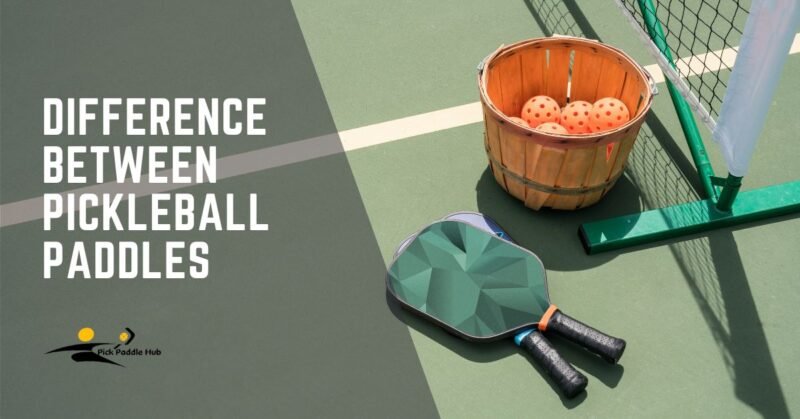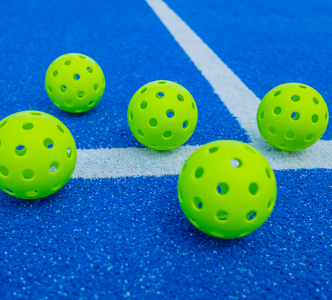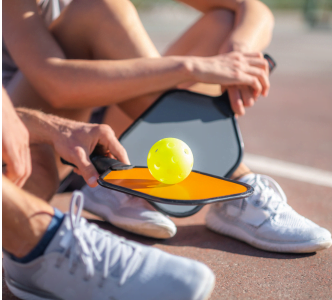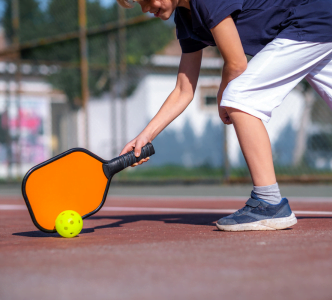If you’re a pickleball player, you’ve likely felt the differences between pickleball paddles, and there are indeed differences in pickleball paddles, Especially in materials, shape and weight. How can I say that?
because, When I started playing pickleball, I experimented with various paddles and quickly realized that each one offers its unique benefits and drawbacks. Some paddles are heavy, while others are lightweight, even the grip size and shape can significantly affect your game. This diversity in paddle design underscores the importance of understanding and selecting the right paddle to match your playing style and enhance your performance on the court.
In this in-depth guide on pickleball paddle differences, we’ll compare pickleball paddles and explore what sets paddles apart in terms of:
- Core Materials
- Surface Material
- Paddle Shape
- Paddle Weight
- Paddle Length and Width
- Edge Gaurd and Sweet spot
- Grip sizes
- Price
We’ll also spotlight key pros, cons and differences between paddle varieties so you can make an informed choice on the best paddle for your playing style.
The Difference Between Pickleball Paddles
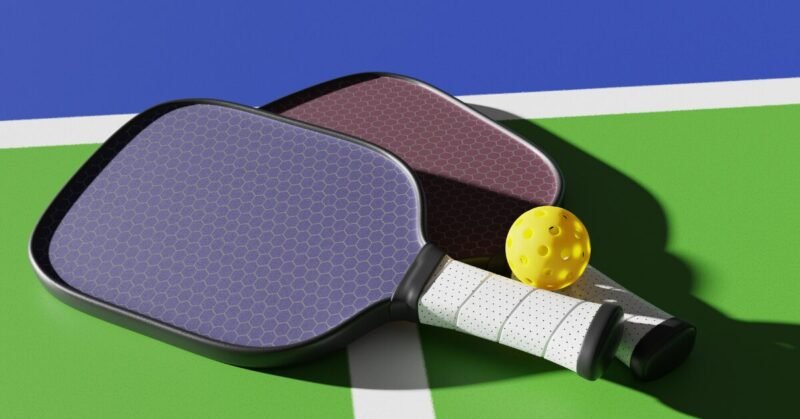
Many pickleball beginners ask me when they start playing pickleball, Are all pickleball paddles the same, I simply say, No because pickleball paddles vary significantly in terms of materials (such as polymer, graphite, and composite), weight, size, shape, and core construction (polymer, Nomex, aluminum). These variations affect the paddle’s performance, including power, control, and feel, allowing players to choose paddles that best suit their playing style and preferences.
Here’s a quick overview of the pickleball paddles differences, This table is structured to cover various paddle features and how they can affect a player’s game.
| Feature | Description | Impact on Play |
|---|---|---|
| Core Material | Polymer, Nomex, Aluminum | Polymer offers soft play and control. Nomex delivers a louder sound and faster play. Aluminum provides a good balance of power and control. |
| Surface Material | Composite, Graphite, Carbon Fiber, Fiberglass | Composite and fiberglass enhance power. Graphite and carbon fiber offer superior control and touch. |
| Weight | Lightweight (7-7.8 oz), Midweight (7.9-8.4 oz), Heavyweight (8.5 oz and above) | Lightweight paddles improve maneuverability. Midweight paddles offer a balance of power and control. Heavyweight paddles increase power but may reduce speed. |
| Grip Size | Small (4”-4 1/8”), Medium (4 1/4″ – 4 3/8”), Large (4 1/2″ and above) | Smaller grips enhance control and wrist action. Larger grips provide more stability and are better for larger hands. |
| Paddle Shape | Standard, Widebody, Elongated | Standard shapes are versatile. Widebody paddles offer a larger hitting surface. Elongated paddles provide extra reach and leverage. |
| Paddle Length | Standard (15.5″ – 15.75″), Elongated (16″ – 17″) | Standard paddles are balanced. Elongated paddles offer extra reach but may have a smaller sweet spot. |
| Paddle Width | Standard (7.75″ – 8″), Widebody (8″+) | Standard paddles are versatile. Widebody paddles have a larger sweet spot and are more forgiving. |
| Edge Guard | Presence or Absence of Edge Guard | Edge guards protect the paddle’s edges but can slightly reduce the hitting surface. Paddles without edge guards offer a larger surface but may be more prone to damage. |
| Sweet Spot | Varies by design and material | Paddles with a larger sweet spot are more forgiving and easier for beginners. Advanced players may prefer paddles with a specific sweet spot for precision shots. |
| Price Range | Varies by brand, material, and technology | Higher-priced paddles often feature advanced materials and technology for competitive play. Budget-friendly options are available for recreational or beginner players. |
As shown above, the materials and other features discussed in the table show the pickleball paddles differences, which can significantly vary in playing characteristics such as control, touch, power, durability, and even pricing. If you’re in the market for a new pickleball paddle or looking to replace your old paddle, understanding the ups and downs between pickleball paddles is crucial.
The market offers a wide array of pickleball paddles, some designed specifically for women and others for men, some of them are left-handed paddles. Recognizing the difference between male and female pickleball paddles is also key to selecting a paddle that complements your unique playing style.
As a pickleball player, I have always been selective about paddles because many counterfeit pickleball paddles resemble the original. With the growth of pickleball, the influx of counterfeit paddles has also increased. That’s why it’s important first to understand the difference between pickleball paddles and then choose your pickleball paddle.
Do Pickleball Paddles Make a Difference?
The simple answer is, Yes, pickleball paddles make a significant difference in gameplay. The material, weight, and design of a paddle can greatly affect a player’s control, power, and accuracy, directly influencing their performance on the court. Choosing the right paddle is crucial for enhancing one’s playing style and overall effectiveness in the game.
Personalized Your Needs and Play Style
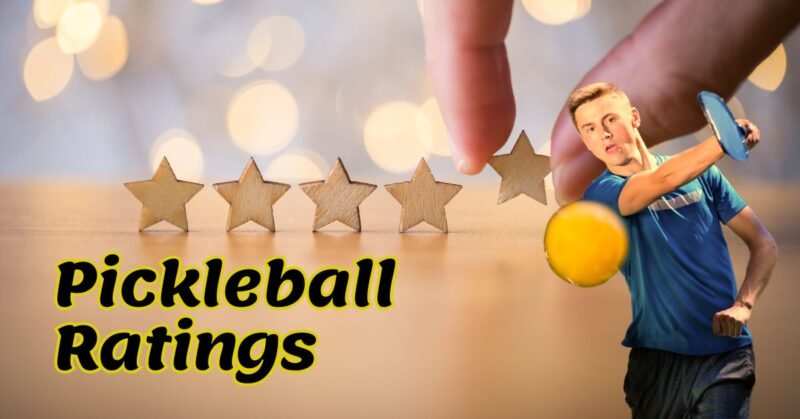
After the basic overview, You might think about how a pickleball paddle suits your needs and gameplay. well, just a quick overview does not prefer the actual paddle that you need, so for this here are the common questions that you should ask yourself before choosing a new pickleball paddle for yourself.
What’s Your Pickleball Rating?
Pickleball ratings are a standardized measure used to assess a player’s skill level in the sport. These ratings range from 1.0 (beginner) to 5.0+ (advanced and professional players), providing a framework for players to understand their current abilities and set goals for improvement.
You might think what is the relation between pickleball ratings with the difference between the pickleball paddles concept? But, Understanding your pickleball rating is crucial, not just for tracking your progress and finding suitable opponents, but also for selecting the right equipment, especially your paddle.
Understanding Pickleball Ratings
- 1.0 to 2.0: These ratings are typically assigned to beginners who are just learning the rules of the game and developing basic skills such as serving, returning, and positioning.
- 2.5 to 3.5: Players within this range have moved beyond the basics. They have a good understanding of the game, can sustain longer rallies, and are beginning to develop strategies.
- 4.0 to 5.0+: Advanced players in these ratings demonstrate refined skills, strategic depth, and competitive abilities. They have excellent ball control, can place shots with precision, and understand advanced game strategies.
Importance in Paddle Selection
Your pickleball rating significantly influences the type of paddle that will best complement your playing style and help you grow as a player. Here’s how:
- Beginner (1.0 to 2.0): If you’re just starting, a paddle with a larger sweet spot and lightweight design is ideal. These features will help you make consistent contact with the ball and learn the game without feeling weighed down by your equipment.
- Intermediate (2.5 to 3.5): Intermediate players should look for paddles that offer a balance between control and power. A midweight paddle with a polymer core can provide the necessary feedback for improving shot accuracy while still allowing for powerful serves and smashes.
- Advanced (4.0 to 5.0+): Advanced players often prefer paddles that offer specific advantages for their style of play. For example, a heavier paddle with a graphite or carbon fiber surface can enhance power and control for precise, strategic plays. Additionally, advanced players might choose paddles with specific shapes and grip sizes to optimize their performance based on their physical attributes and playing techniques.
You might also enjoy:
- Are wooden pickleball paddles good?
- How to clean your pickleball paddle?
- What are delaminated pickleball paddles?
- Why pickleball paddles are so expensive?
- What are pickleball paddles made of?
- What are thermoformed pickleball paddles?
What’s Your Gameplay Style? Banging, Aggressive, or Soft?

In pickleball, your style of play is a significant factor that influences your choice of paddle. Players typically fall into one of three categories: bangers, aggressive players, or those who prefer a soft game. Understanding these styles and their requirements can help you select a paddle that enhances your strengths and suits your approach to the game.
Difference between a Banger and Playing Aggressively?
Banger
A banger in pickleball is a player who predominantly relies on power shots and deep serves to dominate play. Bangers aim to overpower their opponents with force, often driving the ball hard over the net with minimal concern for finesse or placement. The primary characteristics of a banger include a preference for hard-hitting baseline shots and a strategy that focuses on speed and power rather than precision or tactical positioning.
Aggressive Player
While aggressive players also incorporate power into their game, they blend it with strategy and placement. Unlike bangers, who primarily focus on power, aggressive players use powerful shots strategically to set up points, create openings, and exploit weaknesses in their opponents’ play. Aggressive players are versatile, able to switch between power shots and softer touches as the situation demands.
What’s a Soft Game in Pickleball?
The soft game of pickleball is characterized by a focus on finesse, control, and strategy over sheer power. Players who excel in the soft game use dinks, drop shots, and precise placements to outmaneuver their opponents and force errors. The soft game is often played at the net, with players engaging in gentle volleys and dinks until an opportunity arises to execute a winning shot. Paddles that enhance a soft game typically feature a large sweet spot and materials that provide excellent touch and control, allowing for accurate shot-making and effective handling of opponents’ power shots.
Influence of Play Style On Paddle Selection
For Bangers
If you identify as a banger, you’ll likely benefit from a heavier paddle that maximizes power. Look for paddles with a graphite or composite surface that can withstand and deliver powerful hits. A heavier paddle will also help you drive the ball deep into the opponent’s court, maintaining your aggressive baseline play.
For Aggressive Players
Aggressive players should opt for paddles that offer a balance between power and control. A midweight paddle with a polymer core and a graphite or composite surface can provide the versatility needed to switch between power shots and soft touches seamlessly.
For Soft Game Players
If your strategy revolves around the soft game, choose a lightweight paddle with a large sweet spot and a surface material that enhances control, such as graphite. These paddles improve touch and feel, crucial for executing precise shots, dinks, and drop shots.
What Do You Prefer Thicker or Thinner Paddles?
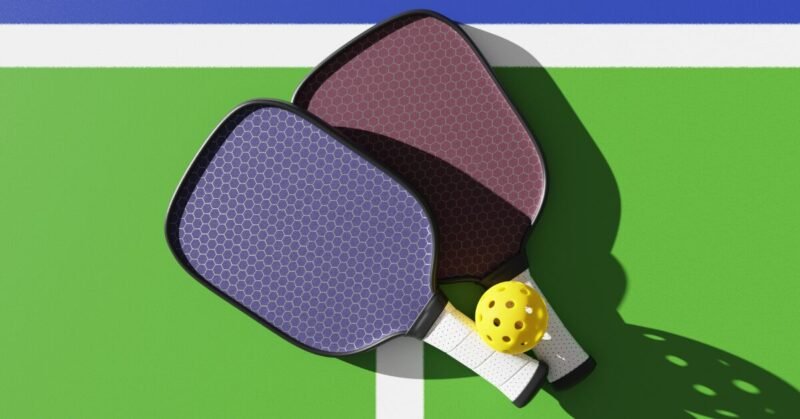
If you prefer thicker paddles, you’re likely looking for enhanced control and a softer feel upon impact, which can be beneficial in a soft game strategy or when you need precise shot placement. Thicker paddles often feature a polymer core, known for its ability to absorb shock and reduce vibration, providing a comfortable playing experience with excellent control.
On the other hand, if you lean towards thinner paddles, you might prioritize speed and power in your game. Thinner paddles can offer a quicker response and are typically lighter, allowing for faster swings. Nomex, a honeycomb material, is commonly used in thinner paddles for its lightweight properties and ability to provide a firmer, more powerful hit.
What Type of Core Material Do You Prefer?
The core material of a pickleball paddle plays a pivotal role in determining its overall characteristics, including thickness, weight, and how it impacts the ball. The most common core materials are polymer, Nomex, and aluminum, each offering distinct advantages and influencing paddle performance in unique ways.
Comparison of Core Materials
Polymer
Polymer cores are made from a plastic blend and are the most popular core material in modern pickleball paddles. They are known for their soft feel and excellent control, making them ideal for players who prioritize precision and a soft game. Polymer cores tend to be thicker, providing a larger sweet spot and reducing vibration, which can be beneficial for players with arm issues.
Nomex
Nomex is a nylon-based material that is dipped in resin and then baked to create a hard, durable core. Paddles with a Nomex core are usually thinner and lighter, offering a high level of power and speed. They produce a distinctive “pop” sound upon impact. Nomex cores are suited for aggressive players who prefer a fast-paced game and rely on powerful shots. However, they may lack the control provided by thicker, softer cores.
Aluminum
Aluminum core paddles are less common but offer a unique blend of characteristics. These cores provide a good balance between power and control, with a focus on precision and touch. Aluminum cores are generally thinner and provide excellent feedback, making them suitable for players who enjoy a strategic game with an emphasis on placement and finesse.
Also Read:
Is The Ball Frequently Making Solid Contact With your Paddle?
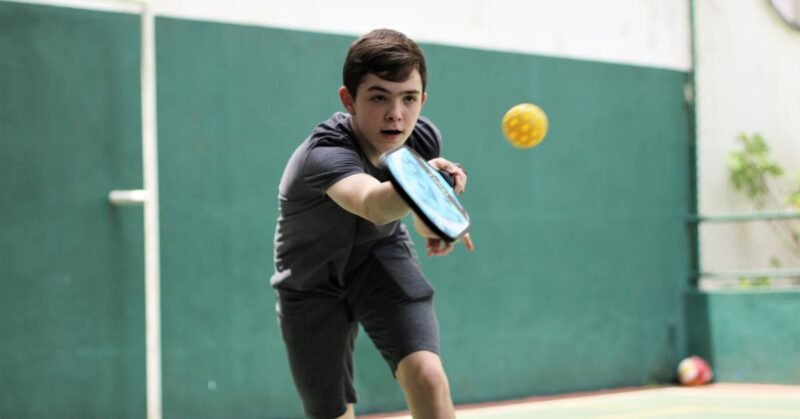
Whether the ball often makes clean contact with your paddle depends on several factors, including your skill level, the paddle’s design, and its sweet spot. A paddle with a larger sweet spot can make it easier to hit the ball cleanly and consistently, especially for beginners or intermediate players.
Advanced players might prefer paddles that offer more precision and control, even if the sweet spot is smaller. Improving your technique and choosing a paddle that complements your playing style can increase the frequency of clean contacts during play.
What is the Sweet Spot on a Pickleball Paddle?
The sweet spot on a pickleball paddle is the area where you can hit the ball most effectively, producing the best combination of power and control. It’s typically located in the center of the paddle but can vary in size depending on the paddle’s design and materials. Hitting the ball within this sweet spot minimizes vibration and maximizes the paddle’s response, allowing for more precise and powerful shots. The size and exact location of the sweet spot can influence a player’s performance, making it a crucial aspect to consider when selecting a paddle.
Importance of the Sweet Spot and How Paddle Design Affects It
The importance of the sweet spot lies in its ability to maximize the paddle’s performance during play. Hitting the ball within this area minimizes vibrations and provides a solid feel, resulting in more consistent and powerful shots.
Paddle design significantly affects the size and location of the sweet spot. Paddles with larger faces and advanced materials often have a larger sweet spot, offering a greater area for effective shot-making. Conversely, smaller or more specialized paddles might offer a smaller sweet spot, requiring more precision but potentially offering greater control for experienced players.
What is Your Preferred Paddle Weight: Lightweight, Midweight, or Heavy?
Selecting the ideal paddle weight is a pivotal decision for any pickleball player, as it significantly influences your gameplay and comfort on the court. Paddle weights are generally categorized into three main classes, each with its unique advantages:
Lightweight (7.3 ounces or less)
These paddles are favored for their maneuverability and ease of use, making them perfect for players who prioritize precision and finesse over raw power. A lightweight paddle is easier on the arm and allows for quick adjustments, ideal for volleying at the net and executing delicate dink shots. Players seeking to enhance their defensive play and reaction times often lean towards lightweight options.
Midweight (Between 7.3 ounces and 8.3 ounces)
Midweight paddles strike a harmonious balance between power and control. They are versatile, catering to a wide range of playing styles. Whether you’re executing a powerful baseline drive or a soft, controlled shot at the net, a midweight paddle offers the flexibility to do both effectively. This category is particularly appealing to players looking for an all-around performance paddle that can adapt to various aspects of the game.
Heavyweight (8.3 ounces or greater)
Heavy paddles are the go-to for players seeking maximum power behind their shots. The added weight aids in driving the ball across the court, making it easier to execute deep serves and forceful returns. While heavier paddles can enhance your offensive game, they require more strength to maneuver and may lead to quicker fatigue. Players with a strong physical presence on the court who enjoy dictating the pace of the game often prefer heavyweight paddles.
The choice of paddle weight is deeply personal and should align with your playing style, physical capabilities, and strategic preferences. It’s not just about the weight itself but how the paddle feels in your hand and complements your movements on the court.
want to know what weight the pros player uses? read our complete guide about what pickleball paddle the pros use.
Additionally, the balance of a paddle—how its weight is distributed from handle to head—plays a crucial role in its performance. A head-heavy paddle might offer more power, while a handle-heavy or evenly-balanced paddle could provide better control and maneuverability.
Have You Ever Added Lead Tape or Texture Weight to Your Paddle? If yes, How Did You Do it?
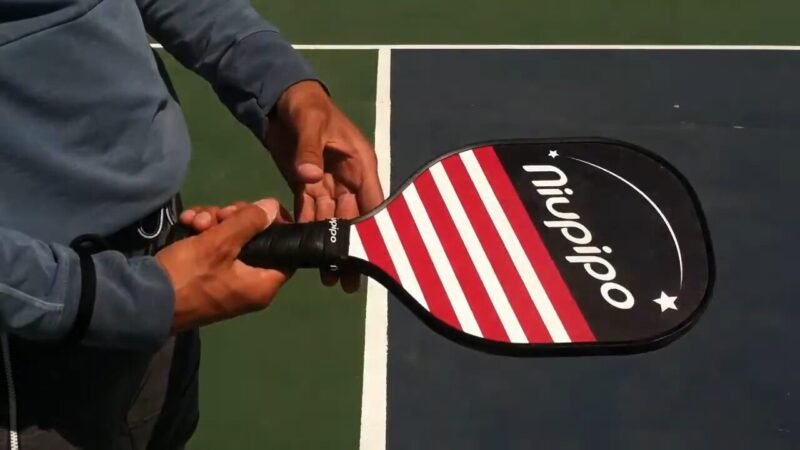
Adding lead tape or texture to a pickleball paddle is a customization technique used by players looking to adjust the paddle’s weight and balance for a more tailored playing experience. This method allows for fine-tuning the paddle’s swing weight, which is how heavy the paddle feels during a swing, and can significantly affect your power, control, and the feel of the paddle in your hand.
When applying lead tape, the placement is crucial as it directly influences the paddle’s balance and performance. If you add weight towards the head of the paddle, it increases the swing weight, enhancing power but potentially making the paddle harder to maneuver quickly. This setup might be preferred by players who enjoy a power-driven game and are looking to add more force behind their shots.
Conversely, adding weight closer to the handle or the middle of the paddle can help maintain or even reduce the swing weight, depending on the distribution. This adjustment can improve control and quickness, suitable for players who value precision and speed over sheer power. It’s about finding the right balance that complements your playing style.
What is a Pickleball Paddle’s Swingweight?
Swingweight is a measure of how heavy a paddle feels when swung. It’s not just about the actual weight of the paddle but how the weight is distributed along the paddle. A paddle with more weight concentrated toward the head will have a higher swing weight and feel heavier to swing, even if its overall weight is the same as a paddle with a lower swing weight. This concept is crucial because it affects maneuverability, power, and control.
- Higher swing weight: Increases power, as there’s more mass behind the ball upon impact. However, it can also reduce maneuverability and speed in quick exchanges.
- Lower Swingweight: Offers better control and faster reaction times, suitable for players who value precision and speed over raw power.
Do You Desire Additional Reach?
Wishing for extra reach in pickleball is common among players seeking a competitive edge, especially when it comes to extending their play over the net and covering more of the court. Elongated paddles have become a popular solution for this, but it’s important to understand both the regulations governing paddle size and the pros and cons of using such paddles.
USA Pickleball Paddle Size Constraints
USA Pickleball, the national governing body for the sport in the United States, sets specific regulations for paddle dimensions to ensure fair play. According to these regulations, a pickleball paddle must not exceed a combined length and width of 24 inches, with the length not surpassing 17 inches. This rule accommodates various shapes and sizes within the sport, allowing for the development of elongated paddles within these constraints.
Pros of An Elongated Pickleball Paddle
- The most obvious benefit is the extended reach, allowing players to cover more area on the court. This can be particularly advantageous for reaching shots that would otherwise be out of bounds or for extending over the net to execute volleys.
- Longer paddles can provide greater leverage on serves and overhead shots, potentially increasing power without the need for additional effort.
- The extra length can also aid in groundstroke play, enabling players to connect with balls that might otherwise require stretching or diving.
Cons of An Elongated Pickleball Paddle
- While not always the case, some elongated paddles may have a smaller sweet spot compared to their traditional counterparts. This can make precise shot-making more challenging, especially for beginners.
- The added length can sometimes hinder quick wrist movements, making it tougher to execute fast volleys or adjustments at the net.
- Depending on the design, elongated paddles might feel top-heavy or unbalanced, which could affect swing mechanics and overall comfort during play.
- Players switching to an elongated paddle from a traditional shape may experience a learning curve as they adjust to the differences in balance, weight distribution, and swing dynamics.
Do you Have a Favorite Paddle Surface?
Pickleball paddle surfaces significantly influence the game, affecting everything from the paddle’s durability to its playability. Players often have preferences based on their playing style, whether they prioritize power, control, or a balance of both. Among the materials used for paddle surfaces, composite, graphite, and carbon fiber are the most common, each offering unique benefits.
What is a Composite?
A composite material in the context of pickleball paddles refers to a blend of materials engineered to optimize performance. Composite surfaces are made by combining two or more distinct materials to create a new material with different characteristics. In pickleball paddles, these composites often include a mix of fiberglass, carbon fiber, and resin, which can be adjusted to alter the paddle’s properties such as weight, stiffness, and surface texture.
Characteristics of Composite Surfaces
Composite surfaces are versatile, and designed to enhance durability and performance. They can be engineered to provide a good balance of power and control, making them suitable for a wide range of playing styles. The surface texture of composite paddles can also be manipulated to affect ball spin and control, offering players an additional layer of strategy in their game.
Are Graphite and Carbon Fiber Different Or Interchangeable?
Graphite and carbon fiber are often mentioned in the context of pickleball paddles, and while they share similarities, they are not entirely interchangeable:
- Graphite is a form of carbon and is known for its lightweight and stiff properties. In pickleball paddles, a graphite surface typically refers to a thin layer of graphite material applied over the paddle’s core, offering excellent control and quick response.
- Carbon Fiber is made from carbon atoms bonded together in more elongated crystals. This material is known for its strength and lightweight properties, making it ideal for creating durable and high-performance paddles. Carbon fiber can be used both in the paddle’s core and surface layers.
Fiberglass Pickleball Paddles Overview: The Power Composite Solution
Fiberglass paddles are known for their “power composite” nature. The flexibility of fiberglass allows for a trampoline effect when hitting the ball, providing players with additional power without needing to swing harder. These paddles are often favored by players looking for an edge in power shots and serves.
Graphite Pickleball Paddles Brief: The Control Element Aspect
Graphite paddles are celebrated for their control elements. The stiff nature of graphite allows for precise shot placement and a consistent playing surface. If you value accuracy and finesse over brute force often prefer graphite paddles for your ability to execute strategic plays and delicate touches.
Carbon Fiber Pickleball Paddles Brief: Combining Control and Power Composite
Carbon fiber paddles offer a unique blend of control and power. The material’s lightweight and strength characteristics allow for quick, powerful shots while maintaining a high degree of control and accuracy. These paddles are suitable for players who do not want to compromise between power and precision, providing the best of both worlds.
Do You Consider Spin to be a Crucial Element of Your Game?
Spin is a critical element in pickleball for many players, significantly affecting ball control, shot placement, and the ability to outmaneuver opponents. The design and construction of a pickleball paddle can greatly influence its ability to generate spin. Factors such as head size, paddle shape, weight distribution, and core thickness all play pivotal roles.
Larger Head Size
A larger head size on a pickleball paddle provides a bigger surface area for hitting the ball, which can enhance spin potential. The increased surface area allows for more contact between the paddle and the ball, offering players a greater opportunity to impart spin. Additionally, a larger head size often means a larger sweet spot, making it easier to hit the ball with the desired spin consistently.
Shape and Sweet Spot
The shape of the paddle also influences its spin capabilities. Paddles designed with a wider body or an elongated shape can affect how the paddle interacts with the ball. An elongated shape, for example, may offer more leverage and a longer surface for brushing the ball, thereby enhancing spin. The positioning and size of the sweet spot within these shapes can also contribute to spin efficiency, with a well-placed sweet spot making it easier to execute spin shots effectively.
Balanced Weight Distribution
The weight distribution of a paddle plays a crucial role in generating spin. A paddle with a balanced weight distribution allows for easier maneuverability, enabling players to quickly adjust their grip and angle of attack to impart spin. Conversely, a paddle that is too head-heavy or handle-heavy might make it more challenging to execute quick wrist movements necessary for spinning the ball.
Thicker Cores
The thickness of the paddle’s core affects its overall playability, including its ability to generate spin. Thicker cores can provide a softer hitting surface, which allows the ball to “dwell” on the paddle slightly longer during contact. This dwell time is crucial for applying spin, as it gives players the chance to impart more rotational force on the ball. Additionally, paddles with thicker cores often have enhanced control features, aiding players in executing precise spin shots.
Do You Play Singles or Doubles?
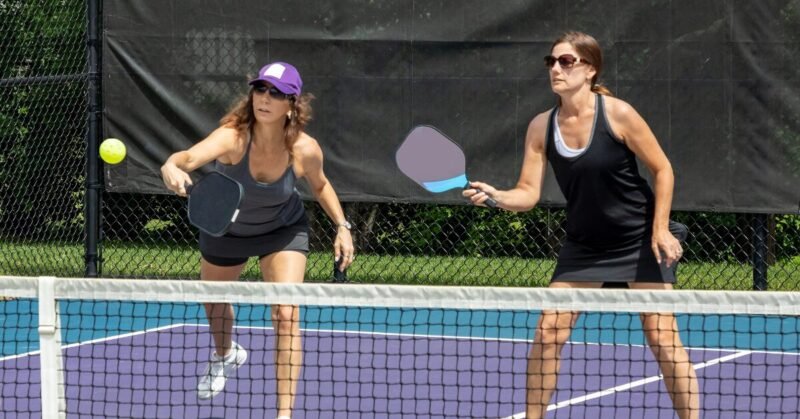
The choice between singles and doubles in pickleball not only affects your strategy on the court but also influences the ideal characteristics of your paddle. Each style of play has unique demands, and selecting a paddle that aligns with these can enhance your performance.
If You Play Doubles
In doubles play, the game is more about quick volleys, strategic placement, and control. The court is covered by two players, which means reaction time and maneuverability are crucial.
Paddle Considerations for Doubles Play:
- Lighter Paddles: A lighter paddle is often preferred for its quick maneuverability, allowing players to respond rapidly at the net.
- Larger Sweet Spot: Given the fast pace of volleys and exchanges, a paddle with a larger sweet spot provides a greater area for effective shot-making.
- Control-Oriented Design: Paddles that emphasize control over power can be advantageous in doubles. This allows players to place shots more precisely, making it easier to outmaneuver opponents and execute strategic plays.
If You Play Singles
Singles play demands more coverage of the court by one player, requiring a blend of power and reach to effectively handle serves, returns, and groundstrokes. Stamina and the ability to generate powerful shots become more significant.
Paddle Choice Differences for Singles Play:
- Heavier Paddles: A slightly heavier paddle can be beneficial in singles for its added power, helping players drive the ball across the court.
- Elongated Shape: Paddles with an elongated shape offer extra reach, enabling players to cover more ground and connect with balls that might otherwise be out of reach.
- Balanced Power and Control: While control remains important, the ability to generate power for deep shots and serves is crucial in singles. A paddle that offers a good balance between power and control can support the diverse needs of singles play.
What is Your Grip Size?
Knowing your grip size is essential for comfort, control, and injury prevention in pickleball. The right grip size aligns with the size of your palm and fingers, ensuring that the paddle feels natural and secure in your hand during play. Here’s how to determine the right grip size for optimal comfort and performance:
Relationship of Palm to Grip Size
The grip size refers to the circumference of the paddle’s handle. It’s crucial that this measurement matches your hand size to prevent strain on your arm and wrist, which can lead to fatigue or injury. A grip that’s too small can cause you to grip the paddle too tightly, leading to unnecessary arm strain, while a grip that’s too large can hinder your wrist movement and reduce shot accuracy.
How to Determine the Right Grip Size
- Index Finger Test: Hold the paddle with your normal grip, and see if there’s enough room to snugly fit the index finger of your other hand in the space between your palm and the tips of your fingers. If there’s too much space, the grip is too big; if your finger doesn’t fit, the grip is too small.
- Ruler Method: Another way to measure your grip size is to use a ruler. Open your hand, extending your fingers straight out. Measure the distance from the middle crease of your palm to the tip of your ring finger. This measurement in inches can give you an approximate grip size. Most adult grip sizes fall between 4 inches and 4 ¾ inches.
- Adjusting Grip Size: If you find a paddle you love but the grip size isn’t perfect, you can adjust it. Adding an overgrip can increase the size by about 1/16 inch per layer, allowing for minor adjustments. Conversely, if a grip is too large, look for a replacement grip that is thinner than the original to reduce the size slightly.
Conclusion
Understanding the difference between pickleball paddles is essential for players looking to enhance their game and choose equipment that best suits their style and needs.
We explored and compare pickleball paddles various factors that contribute to the differences, including weight classifications (lightweight, midweight, heavy), core materials (polymer, Nomex, aluminum), and surface types (composite materials). It also highlighted the significance of paddle dimensions and design, such as head size and shape, which affect a player’s ability to generate spin and achieve the desired balance between power and control.
Additionally, We also addressed the importance of selecting the appropriate grip size for comfort and performance, emphasizing how these various elements can influence a player’s effectiveness on the court. By understanding these differences, players can make informed decisions when selecting a paddle, ultimately finding one that complements their individual playing style, whether they prefer the strategic play of doubles or the extensive coverage required in singles.
FAQ’s
How do I know which pickleball paddle to buy?
To determine which pickleball paddle to buy, consider factors such as your playing style (power vs. control), skill level, and physical comfort. Evaluate paddles based on weight, grip size, core material (polymer, Nomex, aluminum), and surface type (composite, graphite). Testing different paddles, if possible, can also help you make an informed decision.
How do I choose a pickleball paddle for beginners?
Beginners should look for a pickleball paddle that offers a balance of control and power, with a larger sweet spot for more forgiving shots. A midweight paddle (around 7.3 to 8.3 ounces) with a polymer core and a composite or graphite surface is often recommended for its ease of use and versatility.
How do you pick a racket in pickleball?
Picking a racket in pickleball involves assessing the paddle’s weight, balance, grip size, and material. Choose a weight that complements your physical ability and playing style, a grip size that fits your hand comfortably, and materials that match your preference for control or power. Consideration of the paddle’s shape and size for reach and sweet spot is also crucial.
What is the difference between 13mm and 16mm pickleball paddle?
The difference between 13mm and 16mm pickleball paddles lies in their core thickness. A 13mm paddle typically offers more control and touch, ideal for players who prioritize precision and soft play. A 16mm paddle, being thicker, generally provides more power and a larger sweet spot, suitable for players looking for forceful shots.
What is an official pickleball paddle?
An official pickleball paddle meets the specifications set by the USA Pickleball Association (USAPA) for tournament play. These specifications include maximum dimensions (24 inches in combined length and width, with a 17-inch maximum length), material restrictions, and surface texture standards. An official paddle is approved for use in sanctioned events and adheres to the sport’s regulatory standards.

